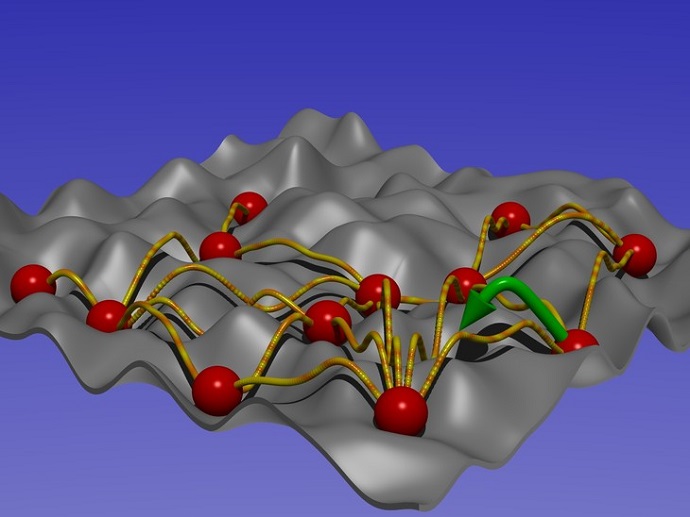January 16, 2015
Sam Sholtis
UNIVERSITY PARK, Pa. -- An interdisciplinary team of mathematicians and physicists has developed a new quantitative approach to understanding the mysterious properties of the materials called glasses. The study is described in a paper in the Nature Publishing Group journal Scientific Reports on Jan. 16. The research, led by Leonid Berlyand, professor of mathematics at Penn State and Valerii Vinokur, Argonne Distinguished Fellow in the Materials Science Division of the Argonne National Laboratory in Illinois, enables a breakthrough in the description of the subclass of glasses, known as a “Coulomb glass,” and has wide-ranging application to understanding a variety of glassy systems in nature.
“The approach we developed provides a launching point for further studies of glasses, whose properties have been too complex for mathematical treatment until now,” said Berlyand.
Glasses -- ranging from familiar window glass to ensembles of interacting electrons in semiconductors and interacting magnetic spins in semiconducting and magnetic electronic devices, have an irregular structure that leads to a situation where the ground state -- the state in which the energy of the system is minimized -- of glasses is achieved by a multitude of configurations of their constituent particles.
“Unlike crystals, whose particles line up into long-range repeating structures that allow them all to be equally energetically happy,” said Vinokur, “the particles in glasses are disordered and their ground state is frustrated -- the forces that determine their configuration are in conflict with each other such that the arrangement that is most advantageous with respect to one of them leaves the others energetically unhappy.” The disordered, irregular structure of glasses results from competition between the interactions among their constituent particles and from the forces exerted on them by the structural disorder of the materials. Frustration is the technical term describing the fact that the forces are competing and not all of the particles can find a resting state that minimizes their energy at any one time. Because of this frustration, there is no single ground state in glassy systems that would allow for a straightforward computational description of their properties, but instead a multitude of energetically equal possibilities.
“Our goal was to find a simple approach that would reduce the computational complexity caused by frustration allowing us to approximate the ground state of glassy systems,” said Berlyand.
The key insight made by the researchers was the realization that, given certain constraints, the electrons in a two-dimensional Coulomb glass interact with each other in the same way as the vortices of magnetic force that form in superconductors interact. The behavior of superconducting vortices is well understood and is described by the Ginzburg-Landau equation, one of the most well-known and universal equations in modern physics that has also led to new fundamental insights in mathematics. The researchers therefore described the ground state of the Coulomb glass by adopting the Ginzburg-Landau equation.
“Our approximation is similar to how tourists reach the top of Mount Fuji. No one starts at the bottom anymore,” said Vinokur. “You start at base camps half-way up the mountain that make the trip shorter and easier. While we cannot at this point describe the true ground state of a glass analytically, our approach takes you to a computational base camp, so we expect that the volume of numerical computations needed to achieve the ground state will decrease dramatically, making them much more feasible and reliable.”
In addition to Berlyand and Vinokur, the research team included Shawn D. Ryan, a Penn State graduate student, and Vladimir Mityushev, professor at the Pedagogical University of Krakow.
The work at Penn State was supported by grants from the National Science Foundation (NSF-DMS-1106666 and NSF-DMS-1405769). The work at Argonne National Laboratory was supported by the U.S. Department of Energy, Office of Science, Materials Sciences and Engineering Division. Mityushev was partly funded by Pedagogical University in Poland and by NSF-DMS-1106666.













